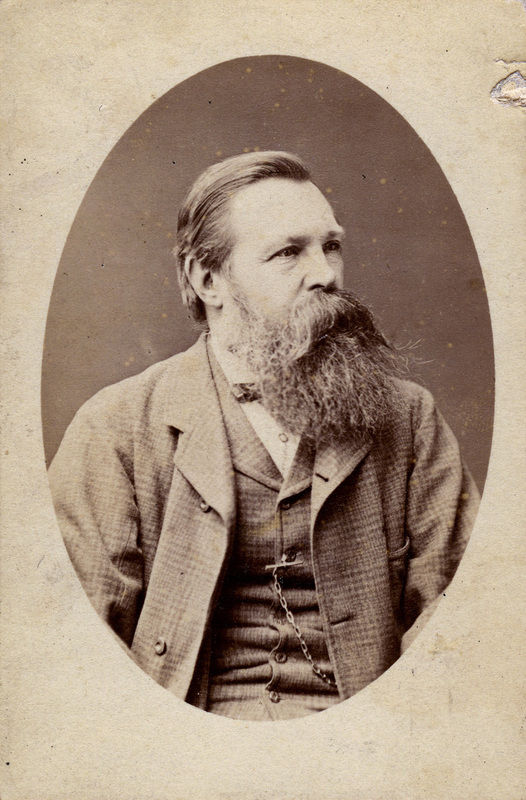— Introduction —
The work of Karl Marx long outlived him, despite the fact that upon his death in relative obscurity in 1883, much of that work remained unfinished. In part because of this incompleteness, his effects, along with those of his friend and closest collaborator Friedrich Engels, have taken on a life of their own. From journeying across seas and borders, to narrowly escaping the Nazi’s rise to power in Germany, Marx and Engels’ archive took a perilous journey over the course of the 20th century only matched by the journey of the ideas inside it.
Discussed even during Marx’s lifetime, the work of assembling and disseminating the collected works of Marx and Engels has been taken up by multiple people across the world, from Moscow, to Tokyo, to Chicago, Berlin, Amsterdam, and Trier. Across this journey, two major projects – and a third project to save the second – to document the complete corpus of Marx and Engels’ writing have emerged. The first, commonly referred to as MEGA1, was started through a complex web of international contacts filtering photocopied documents from Frankfurt, to Berlin, to an institute in Moscow. The second, where the term MEGA (Marx-Engels-Gesamtausgabe) originates, emerged after the 2nd World War as a collaboration between the German Democratic Republic (East Germany) and the Soviet Union, with the help of an archive in Amsterdam. The third project emerged in a state of emergency, as the same archive in Amsterdam and another western partner attempted to save the MEGA from the collapse of socialism behind the Iron Curtain. The story of these three projects will be demonstrated through the records they referenced and the manuscripts they produced.
These two stories, their heroes, intrigue, and intellectual triumphs demonstrate both the continued influence of Marx and Engels, as well as the struggles their ideas and those who have taken them up have faced. We will witness both the persecution and failure, marginalization and resilience in the face of a world changing around Marx’s most ardent followers.
Glossary
German Social Democratic Party (SPD): The Social Democratic Party in Germany has a long history and appears multiple times through the story of this exhibit. The party was founded by a group of diverse socialists, but came to be dominated by Marxists after the deaths of Karl Marx and Friedrich Engels. The party still exists today, though it’s positions are far less radical. It is commonly known as the SPD.
East Germany: East Germany, officially the German Democratic Republic was the state set up in the Eastern part of Germany to succeed the Soviet Union’s occupation zone after the defeat of Nazi Germany. The state was run in a similar fashion to the Soviet Union, and made up a core part of the “Eastern Bloc” behind the “Iron Curtain”. The state is most commonly referred to as East Germany.
The International Institute of Social History (IISH): The International Institute of Social History is an archival institution located in Amsterdam in the Netherlands which manages to play a quintessential role in the history presented in this exhibit. They are the archive which hosts a majority of Karl Marx and Friedrich Engels’ papers, and as such were essential in providing access to the original manuscripts which will appear in this exhibit. Their work is exemplary, and their permission for the public to use their material allowed this exhibit to exist. They will at times be referred to by the acronym IISH throughout this exhibit.
The Marx-Engels-Gesamtausgabe (MEGA): The Marx-Engels-Gesamtausgabe is the official name of the project undertaken to collect all of Karl Marx and Friedrich Engels’ work that began in the 1970s. The project has come to be colloquially known as the MEGA2, with MEGA1 often used to refer to an earlier project with the same goal. The story of these two projects is at the heart of this exhibit. Each is often referred to as the MEGA throughout.

